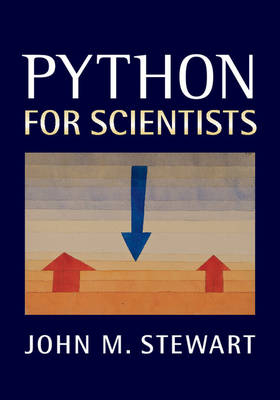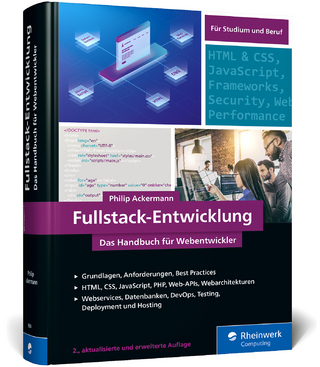
Python for Scientists
Seiten
2014
Cambridge University Press (Verlag)
978-1-107-06139-2 (ISBN)
Cambridge University Press (Verlag)
978-1-107-06139-2 (ISBN)
- Titel erscheint in neuer Auflage
- Artikel merken
Python is a free and easy-to-use software tool that offers a significant alternative to proprietary packages such as MATLAB® and Mathematica®. This book explains Python from scratch, covering everything students and researchers need to get up and running. No previous knowledge of the software is required.
Python is a free, open source, easy-to-use software tool that offers a significant alternative to proprietary packages such as MATLAB® and Mathematica®. This book covers everything the working scientist needs to know to start using Python effectively. The author explains scientific Python from scratch, showing how easy it is to implement and test non-trivial mathematical algorithms and guiding the reader through the many freely available add-on modules. A range of examples, relevant to many different fields, illustrate the program's capabilities. In particular, readers are shown how to use pre-existing legacy code (usually in Fortran77) within the Python environment, thus avoiding the need to master the original code. Instead of exercises the book contains useful snippets of tested code which the reader can adapt to handle problems in their own field, allowing students and researchers with little computer expertise to get up and running as soon as possible.
Python is a free, open source, easy-to-use software tool that offers a significant alternative to proprietary packages such as MATLAB® and Mathematica®. This book covers everything the working scientist needs to know to start using Python effectively. The author explains scientific Python from scratch, showing how easy it is to implement and test non-trivial mathematical algorithms and guiding the reader through the many freely available add-on modules. A range of examples, relevant to many different fields, illustrate the program's capabilities. In particular, readers are shown how to use pre-existing legacy code (usually in Fortran77) within the Python environment, thus avoiding the need to master the original code. Instead of exercises the book contains useful snippets of tested code which the reader can adapt to handle problems in their own field, allowing students and researchers with little computer expertise to get up and running as soon as possible.
John M. Stewart is Emeritus Reader in Gravitational Physics at the University of Cambridge, and a Life Fellow at King's College, Cambridge.
Preface; 1. Introduction; 2. Getting started with IPython; 3. A short Python tutorial; 4. Numpy; 5. Two-dimensional graphics; 6. Three-dimensional graphics; 7. Ordinary differential equations; 8. Partial differential equations: a pseudospectral approach; 9. Case study: multigrid; 10. Appendix A. Installing a Python environment; Appendix B. Fortran77 subroutines for pseudospectral methods; References; Index.
| Erscheint lt. Verlag | 10.7.2014 |
|---|---|
| Zusatzinfo | 12 Halftones, unspecified; 24 Line drawings, unspecified |
| Verlagsort | Cambridge |
| Sprache | englisch |
| Maße | 179 x 254 mm |
| Gewicht | 610 g |
| Themenwelt | Mathematik / Informatik ► Informatik ► Programmiersprachen / -werkzeuge |
| Mathematik / Informatik ► Informatik ► Web / Internet | |
| Mathematik / Informatik ► Mathematik ► Analysis | |
| Mathematik / Informatik ► Mathematik ► Computerprogramme / Computeralgebra | |
| ISBN-10 | 1-107-06139-3 / 1107061393 |
| ISBN-13 | 978-1-107-06139-2 / 9781107061392 |
| Zustand | Neuware |
| Informationen gemäß Produktsicherheitsverordnung (GPSR) | |
| Haben Sie eine Frage zum Produkt? |
Mehr entdecken
aus dem Bereich
aus dem Bereich
Das Handbuch für Webentwickler
Buch | Hardcover (2023)
Rheinwerk (Verlag)
49,90 €
Grundlagen und praktische Anwendungen von Transpondern, kontaktlosen …
Buch (2023)
Hanser (Verlag)
89,99 €


